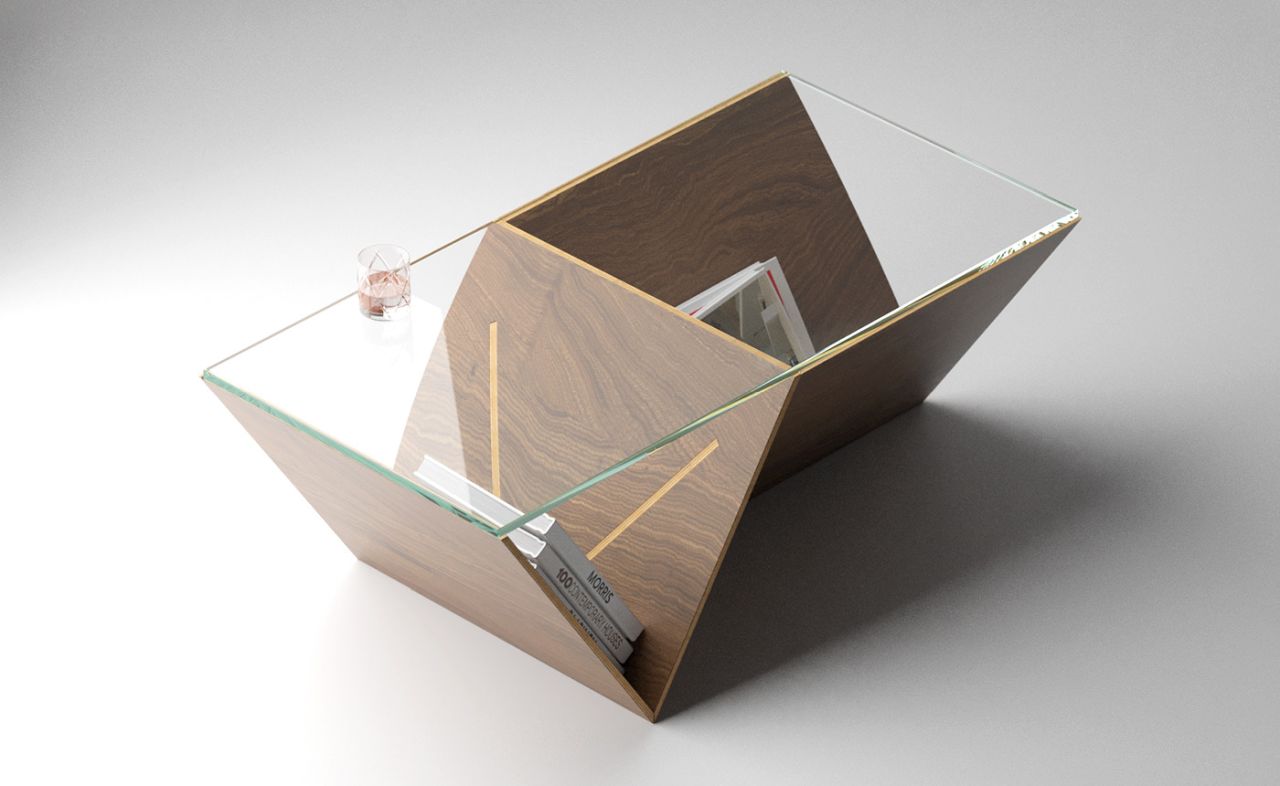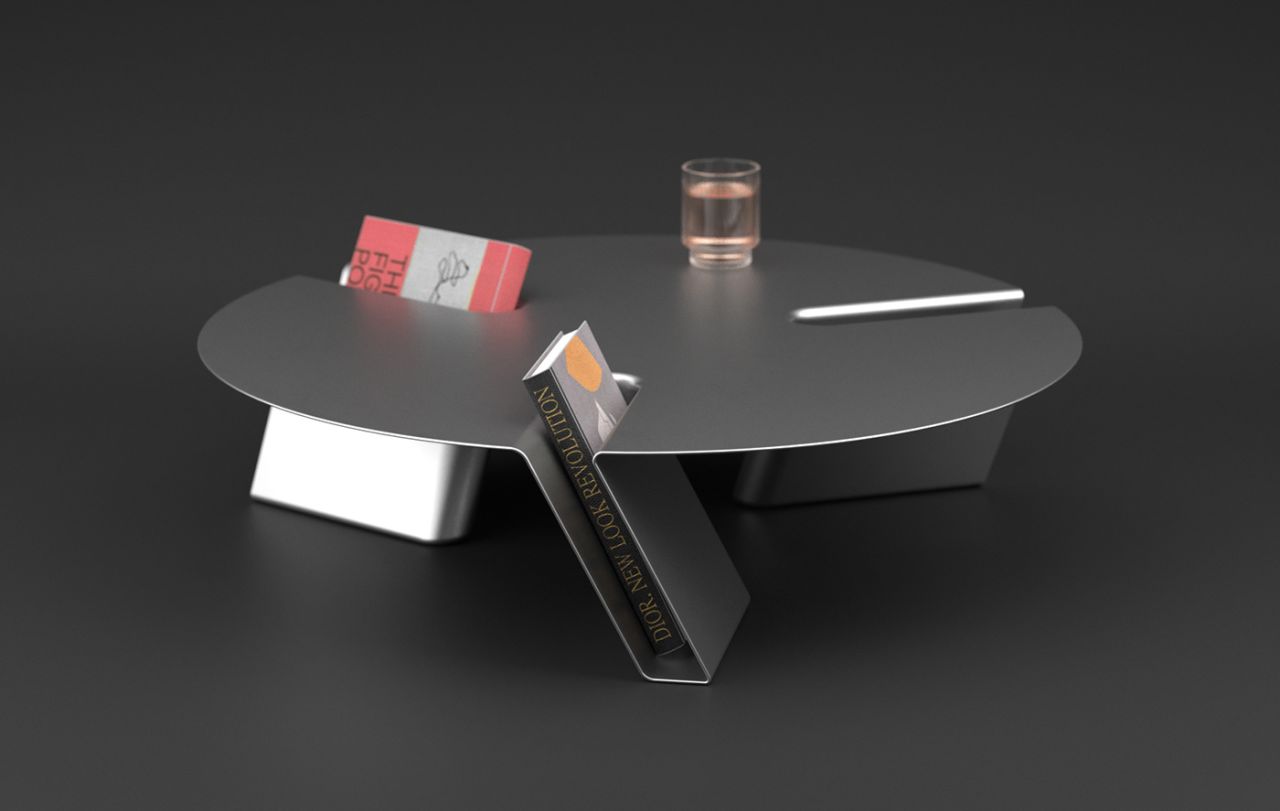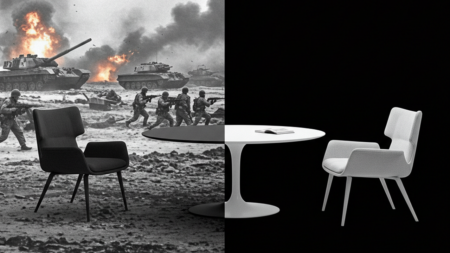There are good designers and then there are others who leave you in absolute awe with their work. Deniz Aktay is someone who belongs to the latter category. As far as I can recall, the Spinning coffee table was the first design of Deniz, which we featured here on Homecrux. Since then, there has been no looking back for Deniz; the astounding German designer has kept us glued to his creation.
Sharing expertise in furniture and concept design, he also enjoys a huge fandom on social media. Deniz has more than 60 thousand followers on Instagram who usually bombard his timeline with comments appreciating his artwork and skill. To have our fair share of appreciation for his design, I got in touch with Deniz for an exclusive interview, where the conceptual designer shares his design philosophy and also throws light on how modern-day tech is useful in hyper-realistic projects.
Homecrux (HC): Who is Deniz Aktay, tell us a little about yourself and what brings you to furniture designing since your education has been more focused on architecture and urban planning.
Deniz Aktay (DA): My name is Deniz Aktay and I live in Stuttgart, Germany. During my studies of architecture and urban planning at the University of Stuttgart and for my perennial work experience as an architect, the aspects of creating, forming, and designing always have been important in my creative work. Following this passion also in my free time, I could successfully participate in several furniture design contests.
Additionally, the more I focused on designing furniture and objects, the more my enthusiasm grew. Over time I figured out that good design means for me finding the right harmony between proportion, material, and functionality. This goes with my demand for simplicity, originality, proper element joining, detailing, and appropriate use of the materials involved. Considering all these aspects, designing a new piece is an interesting challenge every time.

HC: You tend to release a new project roughly every week, how many furniture designs do you work on in a month? Is there a particular target you have set for yourself?
DA: I just love designing, I have this inner motivation to steadily create something new. So whenever I have the time I try to design a fresh concept and share it with the community. But I try to release at least one piece of furniture every two weeks.
HC: Your renders are pretty attractive; is there a design philosophy you follow? Where do you derive your creativity from? Any specific designer you follow?
DA: The design has to be exciting. This could evolve from a nice and extraordinary detail, from a shape itself, from a big functionality but sometimes also from a surprising use of colors. I can find inspiration in many places but mostly I get inspired by other related arts like music, painting, sculpting, and fine arts.
I love to hang out on Pinterest to find new inspirations, I like the algorithm there because you get tons of images from beautiful designs of every art. And of course, I derive a lot of inspiration from the works of other designers. But actually there are too many to name them all.

Also Read: This Table Wraps Up Like a Diary to Document Your Chats Over Coffee
HC: You’re a social media-era design superstar. How powerful has the platform been for budding designers like you without Godfathers in the industry?
DA: As I started designing furniture I successfully participated in a few contests. But unfortunately, these pieces never got realized so no one would ever see them. This is where I started to post them on social media which I did for two reasons. First, I wanted to show them because I liked them and I was kind of proud of these pieces. Second, I also wanted to get feedback for these pieces to learn and get better. So as the community grew I got more and more useful comments and encouragement from people who have already been established in the design industry. So being present on social media helped a lot in connecting with these people and with the design community itself.
And while getting more and more visible on social media, I could attract attention from various interesting manufacturers – so my first professional jobs in designing and furniture realization as well as in visualizing them are just getting started.
HC: With your hyper-realistic renders, you give people an escape from reality; how much do modern-age techniques help. What are your favorite tools and subjects?
DA: I have always been fascinated by CGI and 3D art. For me, it was an absolute game-changer to create objects without worrying about realizing them in the real world. As a student I just couldn’t afford to prototype them. 3D designing allows you so much freedom in your creativity which is necessary to come up with new ideas and concepts. Of course, now that I want to see my objects being realized, I need to develop a sense of the possibilities and limits of the technical and manual aspects but I still benefit from the playful and nearly unlimited freedom every time I start designing in 3D.
So my favorite tool is of course my 3D software (Maxon C4D) and the render plugin (Corona Renderer). But with my architectural background, I also like to transfer these 3D models into more detailed technical drawings of my furniture, which you will often need to get prototyped. For this I use and love the software published by the Nemetschek Group.
HC: Priorly, you told us that you’re collaborating to realize some of your concept designs. How far have you reached? When can people begin using Deniz Aktay designs in both real and metaverse – if you’re planning the latter?
DA: Yes we will hopefully see some pieces on the market soon. Unfortunately, I should not speak about these plans, but I am sure there will soon be some updates on this.
Also Read: Dachshund Sideboard by Deniz Aktay is Twisted at Tail End
HC: After sensations like ‘Tie Stool’ and ‘Spinning Coffee Table,’ what’s the next big idea you have in the pipeline? Would you like to tease it to our audience?
DA: Thank you for calling these design “sensations”! Actually, I can’t say if and when I will come up with a new, unusual concept like that again. They were some lucky shots born from continuous work. Every design out of fifty or hundred has the potential to become a very unique and popular piece. So I guess I will just go on designing and wait for it to come.

HC: How fun/challenging has your journey been thus far? Anything specific, you’d want to share?
DA: The biggest challenge is to share your ideas with the public. As I started I was very afraid that the designs could get stolen, which then actually happened a few times. But you can’t avoid that. And with time I realized the benefits are much bigger. I met so many nice people, got lovely comments, so much good advices, much encouragement, and I could connect with a strong, friendly, and very talented design community.
HC: What does Deniz do when he’s not tinkering with CGI? What message would you like to give to your audience and students who follow your style?
DA: There aren’t many moments I don’t think about designing. And I love that. But as every designer knows you need to get rest, you need to clear your mind to get the energy to work on new projects. And it is sometimes really hard to stop, relax and do something different but it is essential to get new impressions and new power for new designs. Keep that in mind!
Follow Homecrux on Google News!




